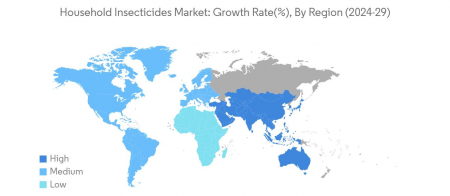The global household insecticides market is expanding rapidly, driven by concerns around vector-borne diseases, eco-friendly product demand, urban sprawl, and innovation in formulations and tech. As per DataM Intelligence, the market will grow at a 5.2% CAGR from 2024 to 2031.
Request a sample copy of research report:https://www.datamintelligence.com/download-sample/household-insecticides-market
Market Overview & Growth Drivers
- Market Size & Trajectory
The global segment grew from USD 19.76 billion in 2023 to a projected USD 33.17 billion by 2032, at a 6.8% CAGR (2024–32) . Allied Market Research estimates a rise from USD 15.2 billion in 2022 to USD 31.1 billion by 2032, at 7.5% CAGR. - Public Health Pressure
More than 700,000 deaths annually are linked to vector-borne diseases like malaria and dengue. Rising disease incidence and government-led awareness campaigns—like the WHO’s strategic preparedness plans—have escalated demand. - Urbanization & Climate Change
Rapid urban growth has intensified pest infestation rates, while warmer climates expand vector habitats. - Eco‑friendly & Natural Trends
Natural formulations (citronella, neem, essential oils) held over 50% market share in 2022, reflecting consumer preference for safer, greener solutions . - Technological Innovation
Advances include biopesticides, smart vaporizers, repellant paints, and long-lasting formulas.
Market Segmentation & Form Factors
By Composition
- Natural: Largest share (>50%)
- Synthetic: Fastest CAGR (~7.7%) due to performance and shelf-life
By Application
- Mosquito control leads (>33% share) driven by disease prevention
- Fly control fastest growing, with ~8.0% CAGR, rising hygiene concerns
By Form
- Sprays dominate due to convenience and consumer familiarity (~4% CAGR in Asia Pacific).
- Coils, vaporizers, gels, mats, baits, creams rounding out the portfolio.
Regional Highlights: US & Japan
United States
- The U.S. leads North America and is seeing consistent demand from urban households and outdoor enthusiasts.
- EPA is banning certain harmful chemicals (e.g., DCPA) and pushing for non-toxic alternatives.
- Market gains from rise in non-toxic, residue-free formulas and online sales channels.
Japan
- Accounts for over 13% share of Asia‑Pacific market growth .
- Dense urban living and hygiene culture drive form-factor innovation (coils, paints, gels) .
- Over 300 patents filed for efficient insecticides reflecting Japan's eco-conscious values like “mottainai”.
- COVID-era data showed insect-repellent sales rising ~20–60% as people stayed indoors with windows open.
“Bug repellents sold ~20% more in Japan during COVID lockdowns…mite-specific products jumped ~60%,” reports Mainichi.
Opportunities & Innovations
- Eco & Biopesticide Development
Incentives in US/EU have made biopesticides grow 10+% per year, faster than synthetic. - Smart Home & IoT Integration
Automated vaporizers and app-controlled repellents address convenience-seeking consumers. - E‑commerce & DTC Growth
Online channels enable remote purchase of diverse, niche formulations—especially in Asia Pacific and North America. - Emerging Markets
APAC (~43.6% share in 2024) has strong potential as urbanization and mosquito concerns rise. - Product Line Extensions
Innovations like repellant paints, lotions, patches, and essential-oil-based options are gaining traction.
Challenges & Regulatory Overview
- Chemical Resistance: Insect overexposure has bred resistance, prompting eco-innovation.
- Regulations & Safety: Growing bans on older chemicals and tighter approvals (e.g., DCPA, neonicotinoids) limit options .
- Health Concerns: Prolonged exposure to ingredients like citronella may cause skin irritation, and regulatory bodies like EPA/Health Canada caution usage .
Request a Quotation: https://www.datamintelligence.com/buy-now-page?report=household-insecticides-market
Strategic Outlook & Recommendations
- Industry Players should prioritize R&D in biopesticides and long-lasting formulations.
- Regulators need to balance vector control with safety—encouraging smart alternatives and stricter vetting.
- Retailers & E‑commerce Platforms ought to expand branded, non-toxic, innovative formats to meet hygiene-conscious consumers.










留言 (0)